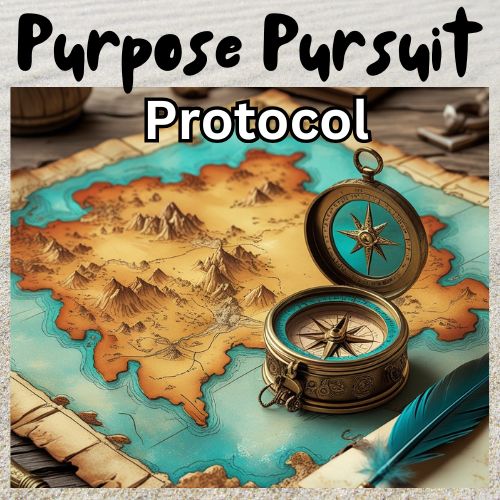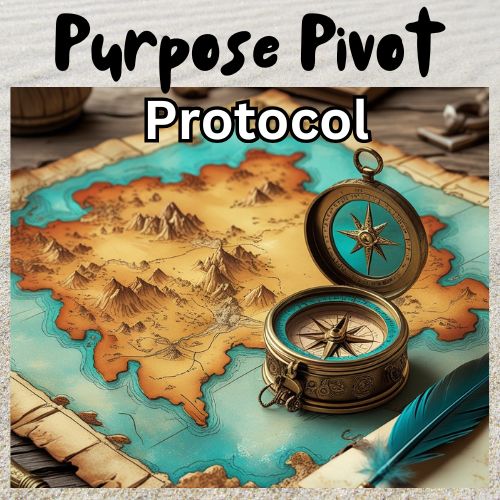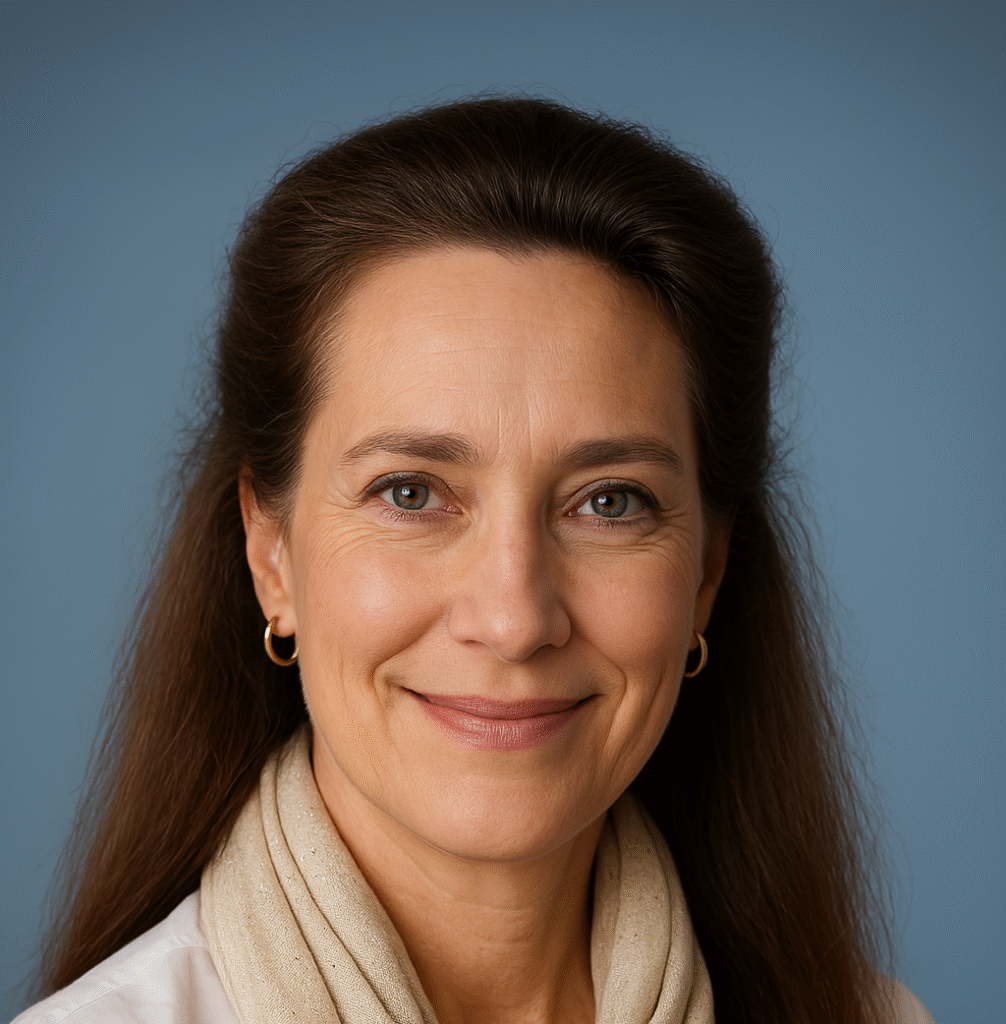“No act of kindness, no matter how small, is ever wasted.” – Aesop
What if I told you that helping just one person could transform hundreds of lives? It sounds like wishful thinking, but science backs it up. This article explores the profound ripple effect that occurs when we focus our energy on genuinely helping one individual. Through the story of Maggie Smith, a struggling teacher who discovered her purpose, we’ll uncover how small acts of intentional kindness create exponential change. You’ll learn five key principles for maximising your impact, discover practical exercises to identify your ripple-starting moments, and understand why purpose-driven action always trumps scattered good intentions.
What Is The Purpose Of Life?
We live in a world obsessed with scale. Bigger is better. More followers, more likes, more impact. But here’s what the metrics-obsessed culture doesn’t want you to know: the most profound changes in human history started with one person helping one other person.
Not a thousand. Not a million. One.
The mathematics of kindness work differently than the mathematics of capitalism. When you genuinely help one person transform their life, you’re not just changing their story—you’re rewriting the stories of everyone they’ll touch for the rest of their existence.
Let me tell you about Maggie Smith, and how her decision to truly see one struggling student didn’t just save a life—it created a legacy that’s still growing decades later.
The Teacher Who Almost Quit (Maggie’s Story)
The fluorescent lights hummed their familiar tune of institutional despair as Maggie Smith sat at her desk, surrounded by towers of ungraded papers that seemed to mock her dwindling enthusiasm. The coffee in her chipped mug had gone cold hours ago, leaving behind a bitter residue that matched the taste in her mouth about her teaching career.
It was November 2003, and after fifteen years in the classroom, Maggie was ready to surrender. The smell of industrial disinfectant mixed with teenage body spray created that uniquely public-school cocktail that used to energise her but now made her stomach turn. She could hear the distant sound of lockers slamming and sneakers squeaking against linoleum—sounds that once meant possibility but now felt like prison bars closing.
Her resignation letter sat in her top drawer, three paragraphs of polite defeat that she’d rewritten seventeen times. The principal was expecting it Monday morning.
That’s when she noticed him.
Marcus Williams sat in the back corner of her third-period English class, his shoulders hunched like he was trying to disappear into his oversized hoodie. While other students chattered about weekend plans, Marcus stared at his desk with the intensity of someone studying hieroglyphics. His notebook remained closed, his pen untouched.
For weeks, Maggie had mentally filed Marcus under “Disengaged” and moved on. There were twenty-eight other students who raised their hands, turned in assignments, and gave her something to work with. Marcus was just… there. A warm body filling a seat until graduation set him free.
But something about his stillness caught her attention that grey November afternoon. Maybe it was the way his fingers trembled slightly as he gripped the edge of his desk. Maybe it was how he jumped when the bell rang, as if he’d forgotten where he was. Or maybe it was the fresh bruise barely visible beneath the sleeve of his sweatshirt.
After class, Maggie watched Marcus gather his things with the careful precision of someone who’d learned that drawing attention meant trouble. He moved like he was underwater, every action deliberate and quiet.
“Marcus,” she called softly. “Could you stay for just a minute?”
His whole body tensed. The few remaining students filtered out, their voices fading down the hallway until only the hum of fluorescent lights remained.
“Am I in trouble?” His voice was barely a whisper, and Maggie’s heart clenched at the raw fear in it.
“No, honey. Not at all.” She pulled a chair close to her desk, the metal legs scraping against the floor. “I just wanted to check in. How are you doing?”
Marcus’s laugh was sharp and humourless. “I’m fine.”
But his hands told a different story, fidgeting with the frayed edge of his notebook. The faint smell of cigarettes and something else—fear, maybe—clung to his clothes.
Maggie had asked this question a thousand times to a thousand students. Usually, “fine” was enough. Keep the conversation light, acknowledge their existence, move on. But looking at Marcus—really looking—she saw something that made her pause.
In his eyes, behind the careful walls he’d built, was a flicker of the same desperation she felt. The bone-deep weariness of someone who’d stopped believing things could get better.
Instead of accepting his “fine,” Maggie leaned forward slightly. “Marcus, what I’m about to tell you might sound crazy, but I need you to hear it. I think you have something important to say. I think you have stories in you that the world needs to hear.”
Marcus blinked, confusion replacing the guarded expression on his face.
“I don’t know what’s going on at home,” Maggie continued, her voice steady despite the way her heart was racing. “I don’t know what voices are telling you that you don’t matter. But I’m telling you that you do. And I’d like to help you find those stories, if you’ll let me.”
The silence stretched between them like a held breath. Through the windows, Maggie could see other teachers heading to their cars, eager to escape for the weekend. She should be packing up too, getting home to her own family. But something about this moment felt bigger than schedules and routines.
Finally, Marcus spoke. “What if there’s nothing there? What if I’m just… empty?”
The question hung in the air, raw and honest. Maggie recognised it as the same question she’d been asking herself for months. What if she’d used up all her good ideas? What if she had nothing left to give?
“Then we’ll start with that,” she said. “We’ll start with empty, and we’ll see what grows.”
That conversation lasted twenty-three minutes. Twenty-three minutes that changed everything.
Over the following weeks, Maggie began staying after school twice a week with Marcus. Not for tutoring or makeup work, but for conversations. Real ones. She brought hot chocolate in a thermos—the good kind with actual marshmallows—and they talked about books, about dreams, about the weight of carrying secrets.
Slowly, Marcus began to write. First, fragments. Observations about the way rain sounded different depending on whether you felt safe inside or were trying to find shelter. Descriptions of his younger sister’s laugh, bright and untouched by the darkness that filled their apartment. Memories of his grandmother’s hands, how they could make anything feel better just by smoothing his hair.
The writing was raw, powerful, and heartbreakingly honest. Maggie felt her own purpose rekindling as she watched Marcus discover his voice. The resignation letter in her drawer became a relic of a different person—someone who’d forgotten that teaching wasn’t about curriculum standards or test scores. It was about seeing the spark in someone and refusing to let it die.
By spring, Marcus had written enough pieces for a small collection. But more than that, he’d started talking to other students. Kids like Alicia, who cut herself in the bathroom stalls. David, whose stutter made him retreat into silence. Sarah, whose eating disorder was slowly killing her.
Marcus began sharing his writing with them, and something magical happened. They started writing too. Not because they had to, but because they’d seen someone like them—someone who understood darkness—create light with words.
That small group became the foundation for a peer support program that’s still running at the school today. Marcus went on to become a social worker, dedicating his life to helping at-risk youth. But his influence didn’t stop there.
The students he reached in high school carried his lessons forward. Alicia became a counsellor specialising in self-harm recovery. David overcame his stutter and now teaches public speaking to kids with speech difficulties. Sarah founded a nonprofit focused on body positivity and mental health.
Each of them helped dozens of others. Those dozens helped hundreds more. The ripple effect from Maggie’s twenty-three-minute conversation with one struggling student has now touched thousands of lives across multiple generations.
Marcus still sends Maggie Christmas cards. He’s thirty-eight now, married with twin daughters, and his organisation has helped over 2,000 young people find their voices. In his cards, he always includes the same message: “Thank you for seeing me when I couldn’t see myself.”
But here’s what Marcus doesn’t know: that conversation saved Maggie too. It reminded her why she became a teacher in the first place and gave her thirty more years of purposeful impact in the classroom. She never did turn in that resignation letter.
Instead, she framed it as a reminder that our biggest breakthroughs often come disguised as our darkest moments, and that sometimes the person you save by helping someone else is yourself.
Five Key Takeaways: The Science of Ripple Effects
1. Quality Over Quantity Creates Exponential Impact
The research is clear: deep, meaningful help to one person creates more lasting change than surface-level assistance to many. When you invest genuinely in someone’s transformation, you’re not just changing their trajectory—you’re potentially altering every relationship they’ll have for the rest of their life.
2. Purpose Is Contagious
Research also shows that when we witness someone living with clear purpose, it activates our own sense of meaning. Maggie’s renewed sense of purpose after helping Marcus didn’t just benefit her—it radiated to every student she taught afterwards.
3. Trauma-Informed Kindness Multiplies
When you help someone heal from their wounds, you don’t just stop their pain—you prevent them from passing that trauma to others. Every person Marcus helped was someone who didn’t have to carry forward the cycle of hurt he experienced.
4. Small Actions + Consistent Presence = Massive Change
Maggie didn’t need a grand gesture or unlimited resources. She needed twenty-three minutes of genuine attention and a willingness to show up consistently. The compound effect of small, purposeful actions always outweighs sporadic grand gestures.
5. Your Ripples Outlive You
The most profound impact often occurs decades after the initial help. Maggie’s influence lives on through Marcus, through the students he helps, through their future families and communities. Purpose-driven action creates legacy by default.
Exercises to Identify Your Ripple Moments
Narrative Journaling Prompt
Write about a time when someone’s belief in you changed your trajectory. Use all five senses to bring the memory to life:
- What did you see in their face when they looked at you?
- What sounds surrounded that moment?
- What physical sensations did you experience?
- What did hope smell/taste like?
- How did their faith in you change your own inner voice?
Now flip the perspective: When have you been that person for someone else? What ripples might you have started without realising it?
The One-Person Impact Audit
- Identify three people currently in your life who seem to be struggling or searching
- For each person, write down:
- One specific way you could offer meaningful help
- What unique perspective or skill you bring to their situation
- How helping them aligns with your own sense of purpose
- Choose one person and commit to one specific action this week
The Legacy Letter Exercise
Write a letter to yourself from the perspective of someone whose life you helped transform, twenty years from now. Let them tell you about the ripple effects of your kindness—how it changed not just them, but their children, their community, their purpose. This exercise helps you see the long-term potential of present-moment compassion.
The impact I have on people is my entire purpose. Both my and my company’s purpose is to help people find their flow and attain the freedom they need to thrive. Without a focus on other people, I feel my purpose would be empty and unfulfilling.
—Arman Assadi, co-founder and CEO, Project EVO
My philosophy is that we’re all put on this earth to be part of the same team. I try to help anyone I can any way I can, and I’m very grateful to be surrounded by friends and colleagues who share the same view and passion for paying it forward.
—Brittany Hodak, Co-Founder, The Superfan Company
My kids are my life’s purpose. I want to be sure I’m setting a good foundation for them and am able to provide the best opportunities for them. I know they are always watching me both in and outside of the octagon and I want to be a good example for them.
—Tyron Woodley, UFC welterweight champion
Ready to Find Your Life Purpose?
Feeling inspired but not sure where to start? You’re not alone. Many people want to create a meaningful impact but feel overwhelmed by the endless needs around them.
That’s exactly why I created my free quiz: “Ready to Find Your Life Purpose?” Take this quiz today, because the world doesn’t need another person trying to save everyone—it needs you helping the one person only you can reach.
Further Reading
- “The Tipping Point” by Malcolm Gladwell – Explores how small changes can make a big difference
- “Half the Sky” by Nicholas Kristof and Sheryl WuDunn – Powerful examples of individuals creating massive social change
- “The Power of Moments” by Chip Heath and Dan Heath – The science of creating transformative experiences
- “Option B” by Sheryl Sandberg and Adam Grant – Building resilience and helping others through difficult times
- “Man’s Search for Meaning” by Viktor Frankl – The foundational text on finding purpose through service
Frequently Asked Questions
Q: What if I don’t feel qualified to help anyone else when I’m struggling myself?
A: Some of our most powerful help comes from our wounds. Maggie was ready to quit teaching when she helped Marcus—her vulnerability made her more, not less, effective. Your struggles give you credibility and compassion that someone who’s “figured it all out” simply can’t offer.
Q: How do I know if I’m actually helping or just interfering?
A: The key is invitation, not invasion. Notice genuine need, offer specific help, and let the other person choose whether to accept. Maggie didn’t try to solve all of Marcus’s problems—she simply offered to help him find his voice.
Q: What if the person I help doesn’t seem to create ripples of their own?
A: Remember that ripples often happen invisibly and across long timeframes. Your help might prevent someone from making a destructive choice, which affects every person they would have hurt. Sometimes the ripple is what doesn’t happen.
Q: I’m an introvert—can I still create a meaningful impact?
A: Absolutely. Some of the most powerful help happens in quiet, one-on-one conversations. Introverts often excel at deep, meaningful connections that create lasting change. Your preference for quality over quantity is actually an advantage in ripple creation.
Q: How do I avoid burnout while trying to help others?
A: Focus on your “one person” rather than trying to help everyone. Set clear boundaries around your time and emotional energy. Remember that sustainable help comes from a full cup, not an empty one. This is exactly what my “Overwhelm to Opportunity” guide addresses—download it for specific strategies.
Conclusion
The world doesn’t need you to save everyone. It needs you to truly see someone. To offer the kind of deep, purposeful help that transforms not just their story, but the stories of everyone they’ll touch for the rest of their life.
Maggie Smith thought she was just having a conversation with a struggling student. She had no idea she was starting a revolution of kindness that would span generations. That’s the beautiful secret of ripple effects—they always start bigger than you think and grow beyond what you can imagine.
Your one person is waiting. They might be sitting in the back corner of your metaphorical classroom, shoulders hunched, convinced they’re invisible. Or they might be the person in your family, your neighbourhood, your workplace who’s been carrying a burden too heavy for one person to bear.
The question isn’t whether you have something to offer—you do. The question is whether you’ll trust that twenty-three minutes of genuine attention might just change hundreds of lives.
The ripples are ready to begin. All they need is you to make the first splash.
Ready to start your ripple effect? Register for the Purpose Pursuit Protocol or the Purpose Pivot Protocol and discover how to identify your unique gifts, find your ideal person to help, and create sustainable impact that energises rather than drains you. Because the world is waiting for the change only you can create.

The Purpose Pursuit Protocol – if you want to discover your life purpose, this course will provide you with the clarity, motivation and direction you need to manifest your next chapter – in both your personal and professional life. Get immediate access

The Purpose Pivot Protocol – drawing inspiration from the Camino de Santiago, this transformative course guides you through a proven framework to recalibrate your authentic purpose and create a meaningful and fulfilling next act. Get immediate access

“I am an experienced medical doctor – MBChB, MRCGP, NLP master pract cert, Transformational Life Coach (dip.) Life Story Coach (cert.) Stress Counselling (cert.) Med Hypnotherapy (dip.) and EAGALA (cert.) I may have an impressive number of letters after my name, and more than three decades of professional experience, but what qualifies me to excel at what I do is my intuitive understanding of my clients’ difficulties and my extensive personal experience of managing major life changes using strategies I developed over many years.” Dr M Montagu
References
- Kim ES, Chen Y, Nakamura JS, Ryff CD, VanderWeele TJ. Sense of Purpose in Life and Subsequent Physical, Behavioural, and Psychosocial Health: An Outcome-Wide Approach. Am J Health Promot. 2022 Jan;36(1):137-147.
- Ryff, C. D., & Singer, B. H. (2004). Psychological well-being: Meaning, measurement, and implications for psychotherapy research. Psychotherapy and Psychosomatics, 73(4), 183-192.
- Steger, M. F., Oishi, S., & Kashdan, T. B. (2009). Meaning in life across the life span: Levels and correlates of meaning in life from emerging adulthood to older adulthood. The Journal of Positive Psychology, 4(1), 43-52.
- Schippers MC, Ziegler N. Life Crafting as a Way to Find Purpose and Meaning in Life. Front Psychol. 2019 Dec 13;10:2778.
- Zika, S., & Chamberlain, K. (1992). On the relation between meaning in life and psychological well-being. British Journal of Psychology, 83(1), 133-145.
- Sutin AR, Luchetti M, Aschwanden D, Lee JH, Sesker AA, Stephan Y, Terracciano A. Sense of purpose in life and concurrent loneliness and risk of incident loneliness: An individual-participant meta-analysis of 135,227 individuals from 36 cohorts. J Affect Disord. 2022 Jul 15

